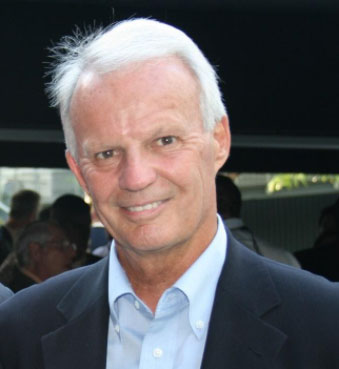Making the First Low Loss Optical Fibers for Communications: A Firsthand Perspective
Hosted By: Fiber Modeling and Fabrication Technical Group
17 November 2021 11:00 - 12:00
Eastern Time (US & Canada) (UTC -05:00)In 1972, the first practical low loss optical fiber was produced having a germania-doped multi-mode core and silica cladding. Attenuation was only 4 dB/km, well below the 17 dB/km breakthrough fiber made in 1970 using a titania-doped silica single-mode core, and the soot deposition process used was readily scaled up in manufacturing. Today, worldwide and ~50 years later, the vast majority of fibers manufactured and deployed are still based on these original processes and chemical formulations.
As co-inventor of these original fibers, Dr. Peter Schultz will describe in detail the experimental successes and failures involved in making them. Although the general story is well known and has already been published in several technical articles and books, this webinar will focus on lessons learned in the quest of this seemingly (circa 1970) impossible goal. It should hopefully prove beneficial for researchers young and old in their technical work today.
Subject Matter Level: Introductory - Assumes little previous knowledge of the topic
What You Will Learn:
- Little-known details of making the first low loss optical fibers
- Some key ingredients for success in technical research
Who Should Attend:
- Anyone interested in optical fiber technology and optical fiber fabrication
About the Presenter: Peter C. Schultz, Peter C. Schultz Consulting, LLC
 Peter C. Schultz, Ph.D., is co-inventor of the fiber optics used worldwide for telecommunications. He is an internationally-recognized scientist and has received numerous awards for his technical achievements. In 1993 he was inducted into the National Inventors Hall of Fame and in 2000 received the National Medal of Technology from President Clinton for his accomplishments (the highest technology award of the US government). In 1991, he was elected a member of the National Academy of Engineering. He is an expert in fiber optic technology (including telecommunication fibers and both terrestrial and undersea deployment, as well as specialty fibers for sensors) and general materials technology. He was President and Chief Technology Officer of Heraeus Inc. (1988-2001), the 900-employee US subsidiary of a multibillion dollar private German company serving the fiber telecom, semiconductor and optics markets. He was also VP Technology (1984-1988) for SpecTran Corp (a large Massachusetts-based fiber optics manufacturer) and Senior Scientist for Corning, Inc. (1967-1984).
Peter C. Schultz, Ph.D., is co-inventor of the fiber optics used worldwide for telecommunications. He is an internationally-recognized scientist and has received numerous awards for his technical achievements. In 1993 he was inducted into the National Inventors Hall of Fame and in 2000 received the National Medal of Technology from President Clinton for his accomplishments (the highest technology award of the US government). In 1991, he was elected a member of the National Academy of Engineering. He is an expert in fiber optic technology (including telecommunication fibers and both terrestrial and undersea deployment, as well as specialty fibers for sensors) and general materials technology. He was President and Chief Technology Officer of Heraeus Inc. (1988-2001), the 900-employee US subsidiary of a multibillion dollar private German company serving the fiber telecom, semiconductor and optics markets. He was also VP Technology (1984-1988) for SpecTran Corp (a large Massachusetts-based fiber optics manufacturer) and Senior Scientist for Corning, Inc. (1967-1984).
Since 2001 he has provided technical and business consulting services through Peter Schultz Consulting, LLC to numerous international companies, including Intel Corp, Spread Networks, Seagate Technology and Yazaki, as well as expert witness representing five companies in various patent infringement and litigation cases. He served (2001 thru 2019) as senior advisor and sole outside Board member of OFS Fitel (the $800M+ AT&T fiber optics business unit acquired by Furukawa in 2001) and as Director, Secretary and advisor (2010 through 2019) and Interim CEO (March through September 2016) of viNGN (Virgin Islands Next Generation Network), a government-owned (semiautonomous) company building and operating an open access all-fiber optic telecom system in the US Virgin Islands. He is also President of a research company (BioSensor Inc., founded in 1997) developing several novel medical sensors based on Russian technology. One of these devices shows very promising results in medical trials for treatment of autism in children.
He is a graduate of Rutgers University (B.S.1964, Ph.D.1967) and the MIT Sloan School Senior Executive Program (1984). Peter Schultz holds 26 patents, has written over 22 research papers and is the recipient of numerous other awards recognizing his achievements, including the American Innovator Award (first recipient-US Dept. of Commerce 1995) presented by Ron Brown (Secretary of Commerce), and the Czech Gold Medal for Achievement presented by President Havel in 2002.
